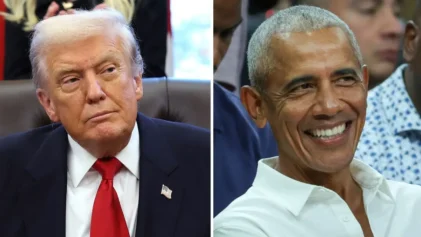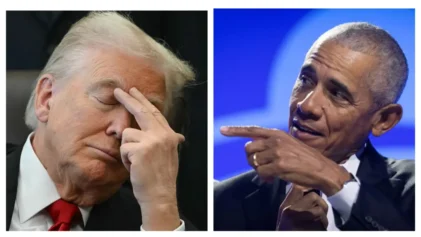Ever since President Obama proposed a massive expansion of preschool education for 4-year-olds, Republicans and media outlets have been taking a closer look a the program and seem taken aback that it focuses on the poor and lower middle class.
The political culture in Washington has been obsessed with the middle class for so long that it is almost startling when the White House decides to devote political capital and resources on the poor.
“Though the effort has been billed by the administration as ‘preschool for all,’ including the middle class, the plan targets disadvantaged children,” the politically conservative Wall Street Journal pointed out.
The crux of the program, which Obama proposed during his State of the Union speech, is to provide matching funds to states that expand preschool slots for families with incomes of twice the federal poverty level or less, which is about $46,100.States could get extra funds to expand preschool offerings to middle-class families.
It is illustrative of the times we are in that even when the president is trying to help the poor, he has to package it as a plan that will benefit the middle class.
It is a far cry from the initial efforts 40 years ago to provide universal early childhood education in the country, which came just a few years after the launch of the War on Poverty. As Gail Collins points out in The New York Times, the effort, led by then-Senator Walter Mondale actually passed the Senate, 63 to 17, but was vetoed by President Nixon.
“We came up with a lot of proposals, but the one we were most excited about was early childhood education. Everything we learned firmed up the view this really works,” Mondale told Collins.
It appears that the Republican attack on the proposal this time is two-pronged: To label the president’s effort another scary expansion of big government; and to attack the success of early childhood education programs.
The effectiveness of high quality preschool education to counter the negative effects of poverty in young children is one of the most thoroughly studied and accepted phenomena in the educational establishment. It has been dramatically demonstrated over the years through the success of the federal Head Start program. Through that program, poor kids where sent on to kindergarten with significant elevation in their school readiness and ability to begin reading.
“Hope is found in what works,” President Obama said yesterday, as he visited the College Heights Early Childhood Learning Center in Decatur, Ga., romping with the little kids and playing with blocks and a magnifying glass. “This works. We know it works. If you are looking for a good bang for your educational buck, this is it. Right here.”
According to Nobel Prize laureate James Heckman, an economist at the University of Chicago, every dollar invested in quality early-childhood education for low-income children provides a 7 to 10 percent annual return on investment from better education, health and economic outcome. Heckman told the Wall Street Journal that high-quality programs might appear to be expensive, but those expenses “are not high in terms of the opportunity costs of not doing the programs.”
Though the White House said the cost of the initiative would be detailed in the coming budget proposal, the program could range from $3 billion to $20 billion a year, W. Steven Barnett, the director of the National Institute for Early Education Research at Rutgers University, told the Times. For comparison, the federal government currently spends $108 billion on all of its education programs combined, which would make this one of the biggest federal education initiatives in a generation.
While educators have accepted for years the efficacy of early childhood education, there has been a growing school of researchers who claim that the effects of programs like Head Start decline over time.
The Wall Street Journal pointed out that a news release that Maria Fitzpatrick, professor of policy analysis and management at Cornell University, sent to reporters cautions against a plan that would expand preschool to all 4-year-olds, saying that “results show that only some children gain — disadvantaged children, particularly those in rural areas — and that the effects fade out over time.”
As for size of government, which seems to be a Republican obsession these days, the GOP thinking was exemplified by Sen. Johnny Isakson of Georgia.
Even though the president traveled to Georgia to promote Isakson’s state as a model for early childhood education, Isakson was not pleased.
Isakson said that Georgia’s program, which offers free pre-kindergarten to all 4-year-olds, works because it was “started locally, is funded locally, doesn’t have a dime of federal money.”
That’s a peculiar comment, suggesting that somehow the source of the money is what leads to success —as if 4-year-olds in Georgia wouldn’t do nearly as well in the pre-K classes if half of the funding came from the federal government.


